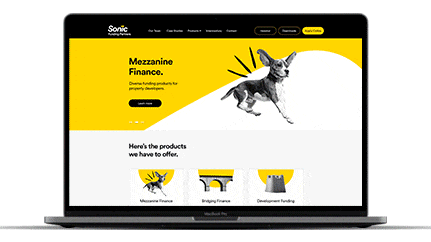Top Tips for Creating an Impactful Web Site Layout That Transforms
To attain this, one have to take into consideration a variety of variables, including comprehending the target audience, prioritizing customer experience, and optimizing for mobile platforms. The critical use of compelling call-to-actions and a well-defined aesthetic pecking order plays an essential role in directing users with their trip.

Understand Your Target Market
Recognizing your target market is essential to reliable web site layout, as it lays the groundwork for creating an engaging user experience. Determining who your individuals are, including their demographics, choices, and habits, allows developers to customize the internet site's material, format, and capability to satisfy certain demands.
Carrying out complete marketing research is essential in this process. Studies, interviews, and analytics can give useful understandings right into customer assumptions and discomfort factors. By compiling this information, designers can develop user personalities that stand for various sections of the target market, making certain that layout decisions are notified and pertinent.
Moreover, comprehending the target audience aids in selecting suitable layout aspects such as color pattern, typography, and imagery that resonate with individuals. An internet site that talks directly to its target market cultivates a sense of link and depend on, encouraging longer check outs and greater conversion rates.
Ultimately, a user-centered strategy to website layout not just enhances individual fulfillment but likewise sustains service purposes by driving interaction and commitment. By prioritizing the requirements and choices of the target market, a website can properly serve its function and achieve preferred end results.
Prioritize Individual Experience
To improve the total effectiveness of a website, prioritizing user experience (UX) is necessary (Website Design). A well-designed UX ensures that site visitors can browse the website effortlessly, locate information quickly, and engage with material meaningfully. This brings about boosted customer contentment and greater conversion rates
Begin by implementing instinctive navigation. Menus ought to be realistically structured, enabling customers to situate vital locations of the site with marginal effort. Uniformity in design components, such as shade schemes and fonts, fosters knowledge, which is important for maintaining user involvement.
In addition, consider the filling speed of your web site. A hold-up of just a couple of seconds can result in significant drop-offs, as customers are less most likely to wait on a slow-loading web page. Improving images and enhancing code can improve efficiency and keep site visitors.
By prioritizing individual experience, you not only produce a more delightful environment for site visitors yet also reinforce your brand's reliability. Eventually, an emphasis on UX is an investment in the lasting success of your internet site.
Maximize for Mobile Gadgets
Optimizing for smart phones is important in today's digital landscape, where an enhancing number of customers gain access to websites via smart devices and tablet computers. A mobile-friendly design not just enhances individual experience however additionally plays a considerable function in enhancing internet search engine rankings. To achieve this, it is vital to embrace a receptive design that immediately adapts to different screen dimensions and positionings.
%20%5B60%25%5D.jpg)
Packing speed is one more crucial variable; mobile customers are typically much less person and expect quick access to information. Maximize pictures and utilize internet browser caching to enhance performance. Finally, examination your website on several tools and screen resolutions to recognize and correct any type of possible usability problems. By prioritizing mobile optimization, you make certain that your web site stays competitive and effectively involves a broader audience.
Usage Engaging Call-to-Actions
A site's efficiency often depends upon its capacity to guide site visitors towards desired actions, making compelling call-to-actions (CTAs) essential components of layout. CTAs serve as the crucial factors that route customers to involve with the website, whether that indicates making a purchase, registering for a newsletter, or downloading a resource.
To produce effective CTAs, clarity is vital. Use concise language that clearly connects the action you want the individual to take. Expressions such as "Get going," "Subscribe Free," or "Shop Now" not only convey seriousness yet likewise get rid of uncertainty. The placement of CTAs is equally vital; they must be purposefully positioned throughout the web page to guarantee they are quickly noticeable, particularly in high-traffic locations.
In addition, the layout of CTAs should stick out without being meddlesome. Utilize contrasting shades and clear typefaces to guarantee they catch attention. In addition, take into consideration making use of directional signs, such as arrows or images, to direct users towards these buttons. By focusing on these elements, businesses can significantly boost customer engagement, driving conversions and ultimately attaining their site's goals.
Concentrate On Visual Hierarchy
Reliable web site layout counts heavily on a well-structured aesthetic hierarchy that overviews individuals via material seamlessly. By arranging elements in a fashion that prioritizes details, designers can boost individual experience and assist in decision-making. This involves making use of dimension, shade, contrast, and spacing purposefully to attract attention to one of the most critical elements of a page.
Using larger fonts for headings and subheadings develops a clear their website distinction between different sections, enabling users to scan material effortlessly. Additionally, employing contrasting colors for buttons and calls-to-action can capture individual attention and encourage communication. Whitespace is another essential part; it stops mess and enables customers to concentrate on vital messages without distractions.
Images and graphics should match the text while likewise sticking to the well-known hierarchy, reinforcing the overall message (Website Design). Consistency in style elements, such as color plans and typography, additional enhances the aesthetic hierarchy, making navigation instinctive

Final Thought
In final thought, effective internet site design necessitates a detailed understanding of the target audience, Discover More Here prioritization of customer experience, and mobile optimization. Eventually, a well-executed site layout serves as an essential element in driving individual activities and attaining company objectives.